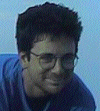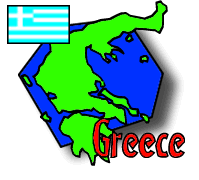Person of the Day: Jammin
Place of the Day: Archaeological Museum of Thessaloniki
Tech Fact of the Day: Greek alphabet
| Upper Case | Lower Case | Equivalent in English |
| a (as in "ah") | ||
| v | ||
| g | ||
| d | ||
| e (as in "eh") | ||
| z | ||
| i (as in "ee") | ||
| th | ||
| i (as in "ee") | ||
| k | ||
| l | ||
| m | ||
| n | ||
| x | ||
| o (as in "ah") | ||
| p | ||
| r | ||
| s | ||
| t | ||
| i (as in "ee") | ||
| f | ||
| ch (as in the ch in "Bach") | ||
| ps | ||
| o (as in "ah") |
Group Dispatch, March 5-6

Questions? Ask Ethan ![]() !
!
Return to Fast Facts
 |
 |
 |
 |
 |
|
Itinerary/ Journal |
Discussions |
About Greece |
eDscape Projects |
Scrapbook |
|
|
|
|
|
|
|
Copyright 1997-99 BikeAbout. All rights reserved.

